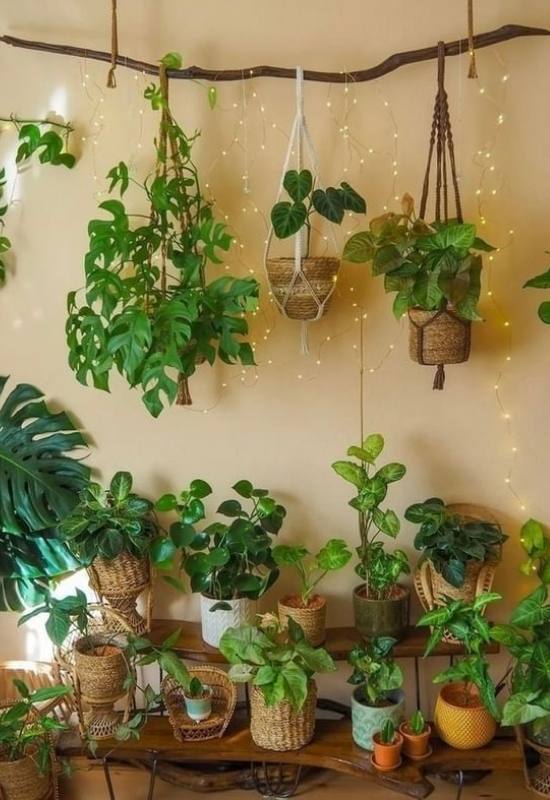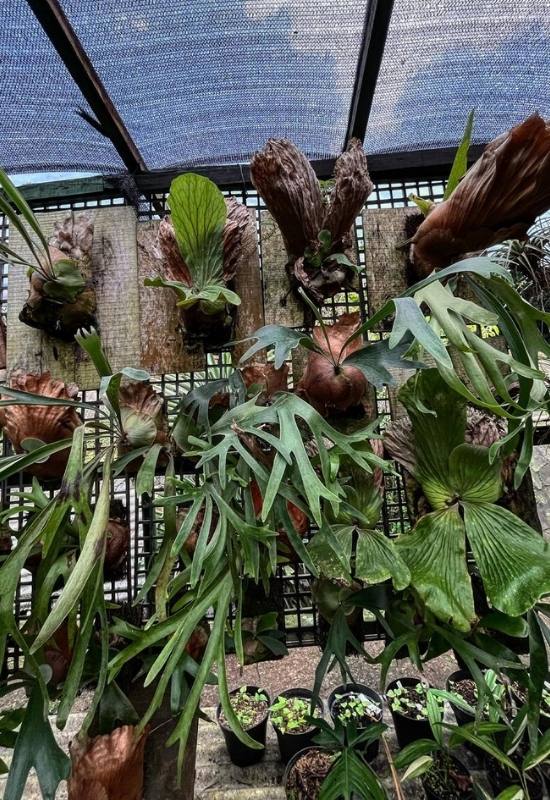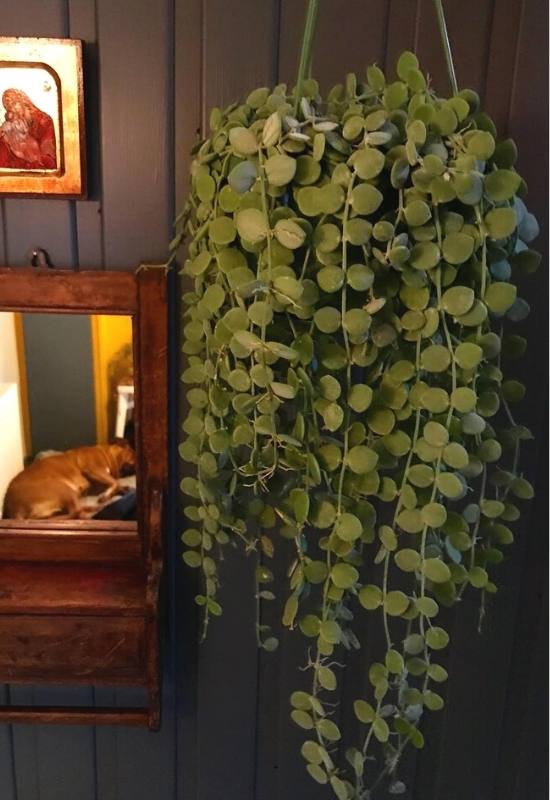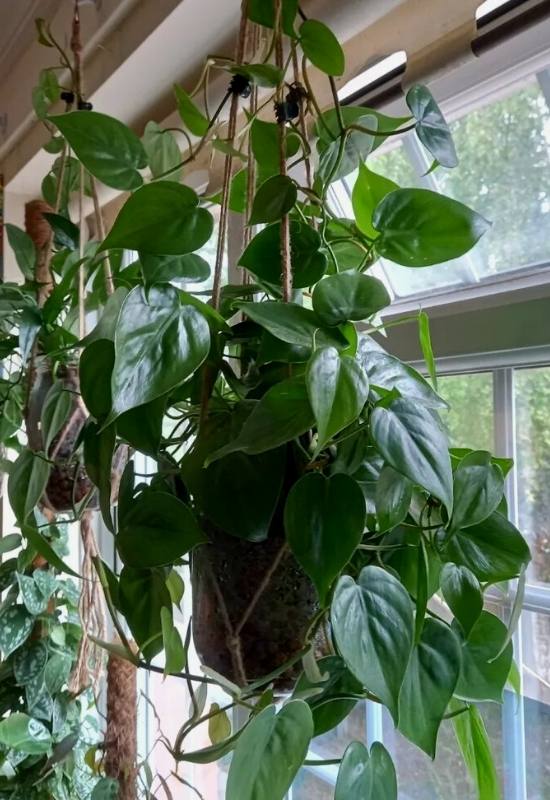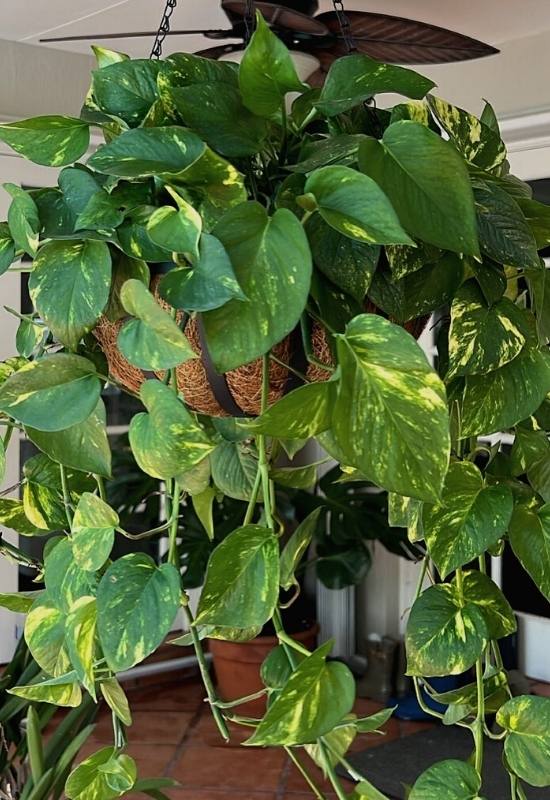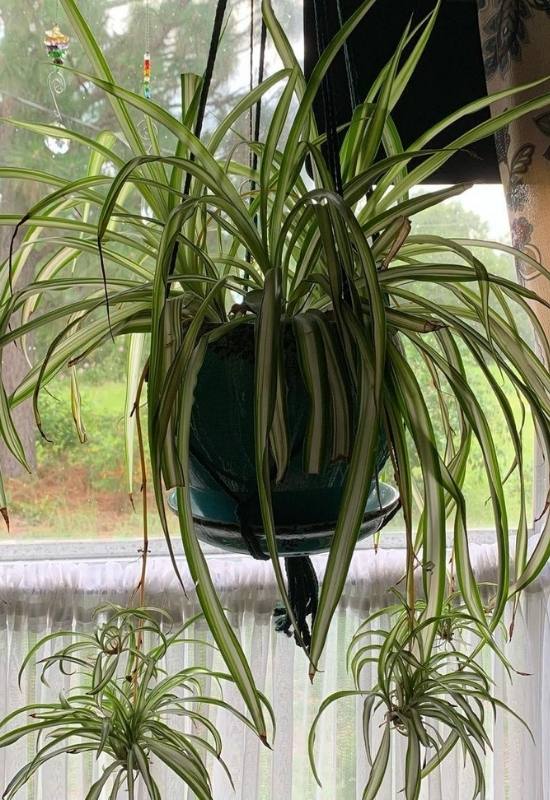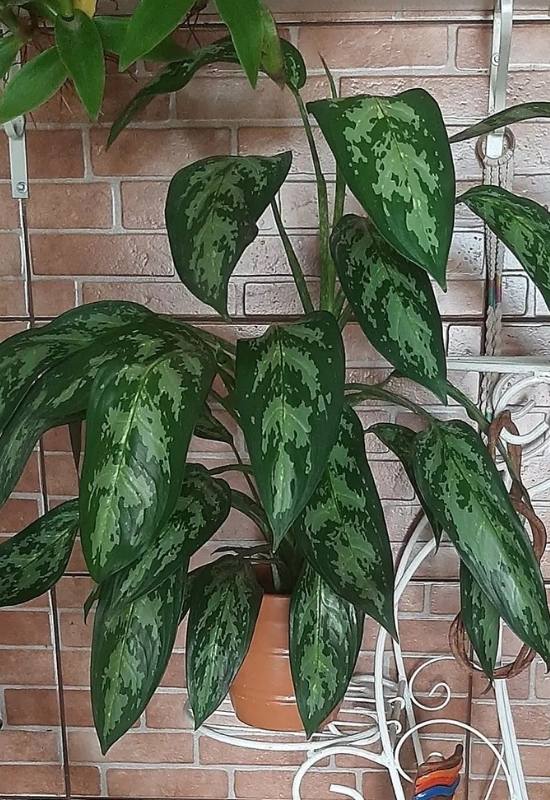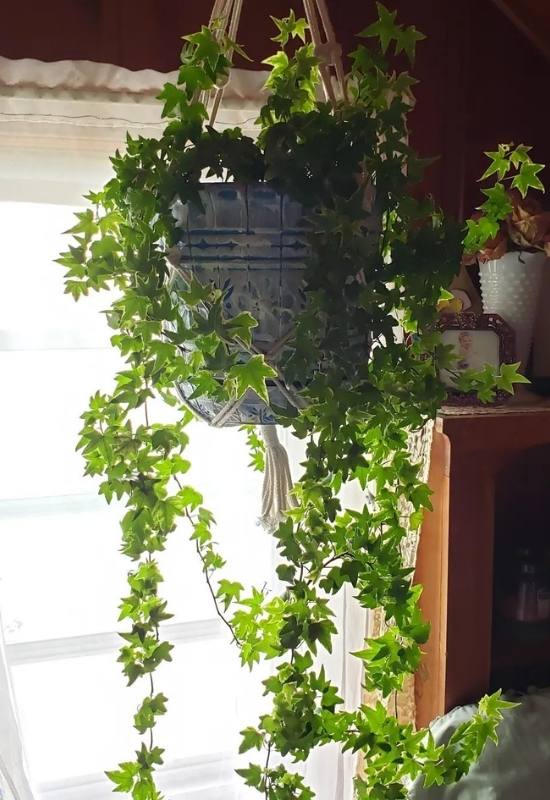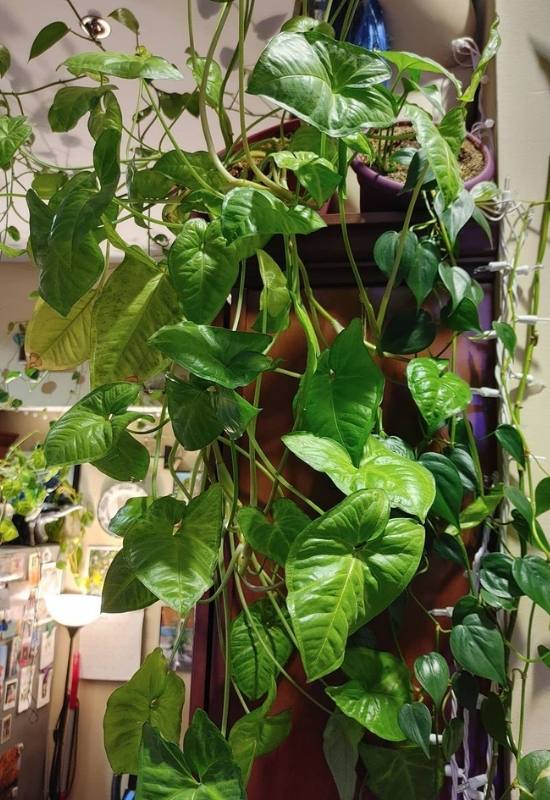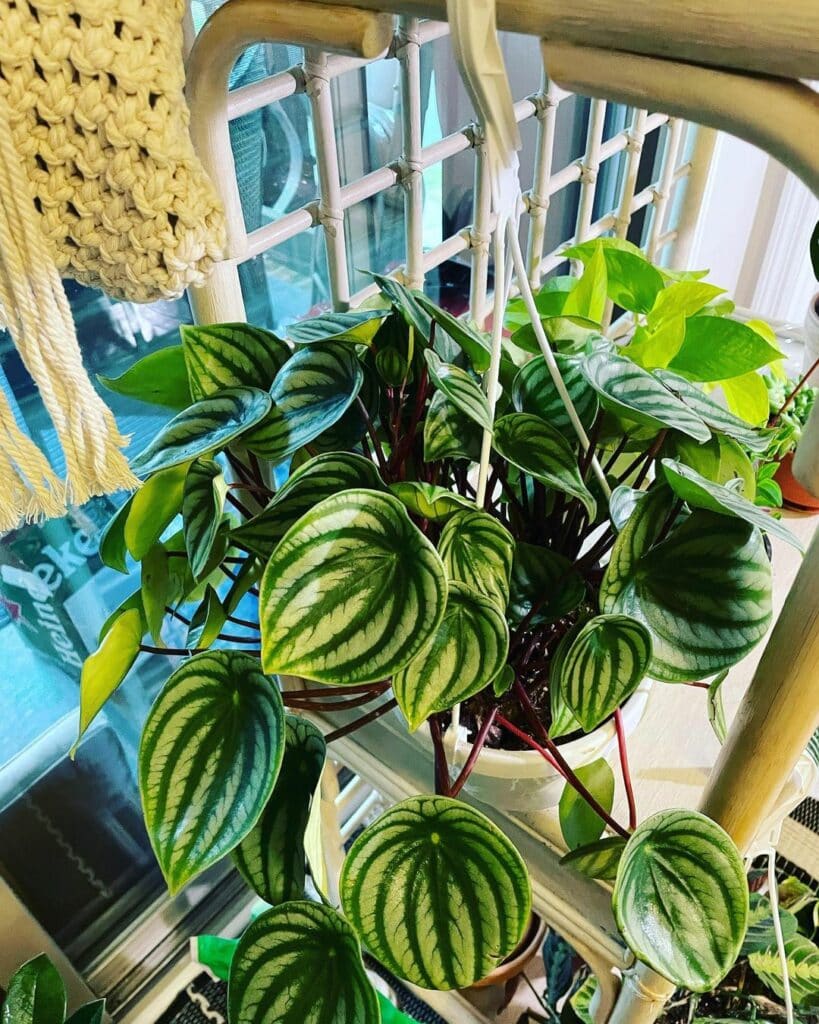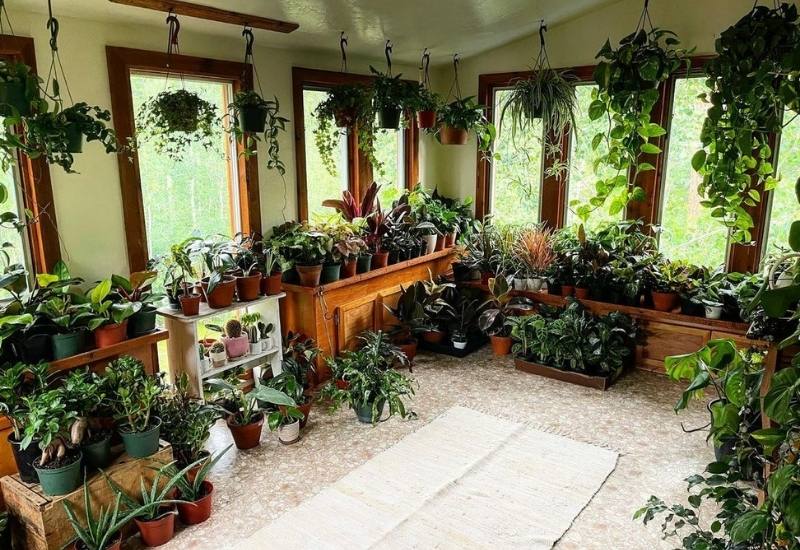
Limited space and dim light in your room or office, yet yearning for some lush greenery? The trick lies in utilizing those neglected vertical spaces without cluttering your interior!
Simply grab some hanging baskets and choose houseplants with trailing growth habits that thrive even with minimal to no sunlight. And voila, you’ll create your own tiny oasis of natural charm, reminiscent of tranquil forest canopies.
Swing according to their desires, many indoor hanging plants and trailing varieties, such as staghorn fern, a chain of coins, ivy, and philodendron, wait for you to run it along your shelves or cascade greenery from the top of a cabinet, ladders, fireplaces and shelves.
Take the plunge—hang these greens to invigorate your office, brighten your living room, or add a whimsical touch to your bedroom. Wondering which varieties to opt for?
Welcome and get ready to bring airy decoration into that darkest, shadiest corner that needs some life with low-light hanging houseplants!
Now, let’s address the elephant in the room: low light conditions.
Low Light And Hanging Plants
Low light is a common problem for indoor spaces, and most plants like bright light, but there are due exceptions.
When it comes to hanging baskets, what you’d ideally want are arching branches or fronds, draping foliage, or even trailing vines and stems to achieve that cascading effect.
Fortunately, many forest plants do just this: from the very popular golden pothos to ferns, you can find a variety with these characteristics that suits your design, décor, and even the volume you want to fill with green foliage.
A little clarity is needed here; indirect light is not the same as low light. When I mention “medium” or “moderate” indoor light, I’m talking about spaces bathed in reflected light from walls.
On the other hand, “low light” refers to corridors or spots where your houseplant will be tucked away in the shade for the majority of the day.
But which hanging plants can thrive in these condition?
12 Best Indoor Hanging Plants That Thrive With Little Light
So, here we go! It’s time to meet the best hanging plants perfect for spaces where bright light is a luxury!
Coming to you from under the tall trees of temperate and tropical forests, here are 12 of my favorite low-light hanging houseplants perfect for livening up the shady areas in your home or office.
1: Southern Maidenhair Fir (Adiantum capillus-veneris)
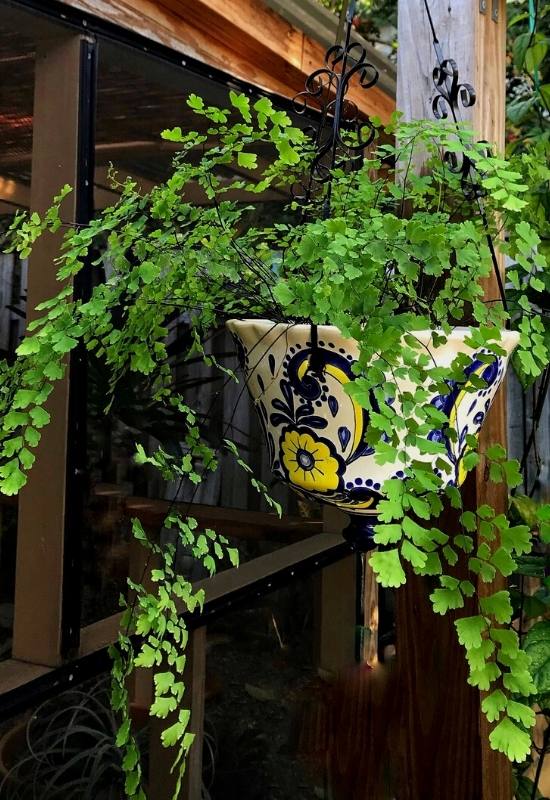
Bring fine texture and a florid sense to your low light rooms with southern maidenhair fir. This tough but elegant trailing beauty has very thin black stems that look like hair, in fact, and then the mid green, lobed little leaflets fill them with a dense coat that has the same quality of fine lacework.
Of course, this means lots of interesting reflexes and shades wherever you grow it. Common both as an indoor and outdoor plant (especially for rock gardens), it is very popular thanks to its low maintenance and tolerance to a bit of neglect.
Cheap and easy to get, southern maidenhair fern is perfect if you want a safe bet, you don’t want to invest much money or time, but you still want that vigorous green foliage you find in the underbrush of forests.
2: Staghorn Fern (Platycerium spp.)
Instead, if you want a dramatic and sculptural effect for medium or low light places, staghorn fern is your man – well, houseplant!
Its long, deeply lobed green and glossy leaves look like the antlers of deer, in fact, and they drape over containers beautifully and with the majestic touch of these impressive herbivores.
Or, if you wish, they may remind you of sea weed that you can find in warm seas, like the Sargasso, especially thanks to their particularly smooth surface. In any case, this is a plant that calls attention, even if you hang it high above your head!
Tropical in appearance and origin, this epiphyte comes to your living room, office or even garden baskets with all the quirky personality of the rainforests it calls home, those of South America, Africa, Southeast Asia or even Australia, and the other worldly New Guinea!
3: String of Coins (Peperomia pepperspot)
For a fresh and joyful, small draping houseplant with a spring like personality to hang in your home or office, string of coins is an excellent choice.
Its thin, trailing branches fill with a dense canopy of mid to dark green round leaves, forming a round clump with drooping tails that wave underneath your hanging basket.
They look like little succulent coins, with a glossy surface and pink to copper undersides with pastel tonalities.
It has an overall natural and refreshing look, somewhat unruly but at the same time very old world and comfortably pleasing.
String of coins is ideal to bring florid foliage with lots of light games where light is low, without stealing the show from other plants or from major design elements, like statues or beautiful furniture.
4: Heartleaf Philodendron (Philodendron hederaceum)
And if you like long trailing vines with beautifully shaped, shaped, showy foliage, you will fall in love with shade loving heartleaf philodendron!
Up to 8 inches long (20 cm) and looking like deep and glossy green hearts, the leaves of this exotic houseplant from Central America and the Caribbean creates a curtain of tropical and sculptural leaves that hand and droop like few other plants in the world.
These are very glossy too, and now there are also variegated cultivars. What is more, it grows fast, so you can place it on top of a cupboard or on a beam by the ceiling and it will soon touch the floor!
But don’t worry; heartleaf philodendron is very easy to trim and keep in size; and it is also very low maintenance indeed and a perfect air purifier!
5: Bolivian Begonia (Begonia boliviensis)
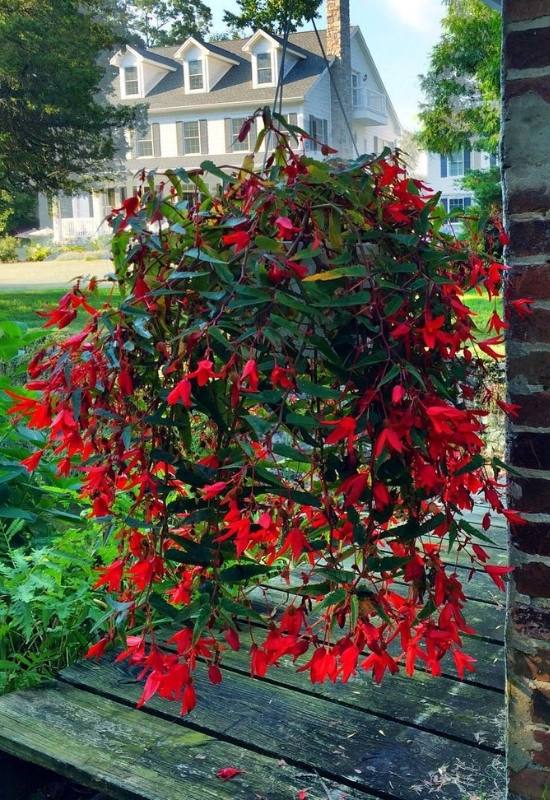
Brighten up that shady corner with a marathon bloomer that drapes hanging baskets with dense foliage and generous flowers: Bolivian begonia!
Common as an outdoor plant as well, you can have blossoms of colors from white to deep red for months drooping from the arching stems, adorned as well with fleshy, butterfly wing like and glossy leaves.
My favorite varieties? The cultivars ‘San Francisco’ for its rare and intense coral orange petals, or maybe ‘Mistral Pink’ whose dark leaves are a perfect backdrop for its deep hot pink blooms.
Easy to grow and very rewarding, Bolivian begonia brings the outside world inside your house with all its bright personality, colors and shade loving draping stems!
6: Golden Pothos (Epipremnun aureum)
Arguably the most loved trailing vine for shady places all over the world, golden pothos is a household name.
We have all seen its heart shaped leaves drop down on thin stems from the tops of cupboards, often from a simple water jug, and fill the room with its fresh and soothing beauty.
And clean air to boot! With green or variegated varieties (yellow and green, or even cream and green), this low maintenance houseplant deserves a special place among the plants that can make a spectacular of a small hanging basket even in a dark corner of a room.
You don’t even need to go to a garden center to get a golden pothos; surely you have a friend who has one somewhere, and you can simply take a stem cutting, put it in a glass of water, wait till it roots, and grow your own!
7: Spider Plant (Chlorophytum comosum)
What can we say about spider plant in a hanging basket where light is low? Simple, that it will bring its cheeky personality and light colors, and a smile on everybody’s face.
This little succulent that looks like unruly tufts of grass has long, arching blade like and variegated leaves, in shades of cream and bright to mid green.
Little pups grow on the tips of stems, and they drape containers trying to climb down to the ground in search of a new home…
Very popular and easy to grow, it adapts very well to both indoor and outdoor spaces. And it does bloom too, with little white and star shaped flowers!
Once again, you can easily get spider plant from a friend; just take a pup, plant it in your own hanging basket and you will soon have that funny and cheerful little clump of joy in your living room, kitchen or even bedroom, as it won’t produce carbon dioxide at night.
8: Hens and Chickens Fern (Asplenium bulbiferun)
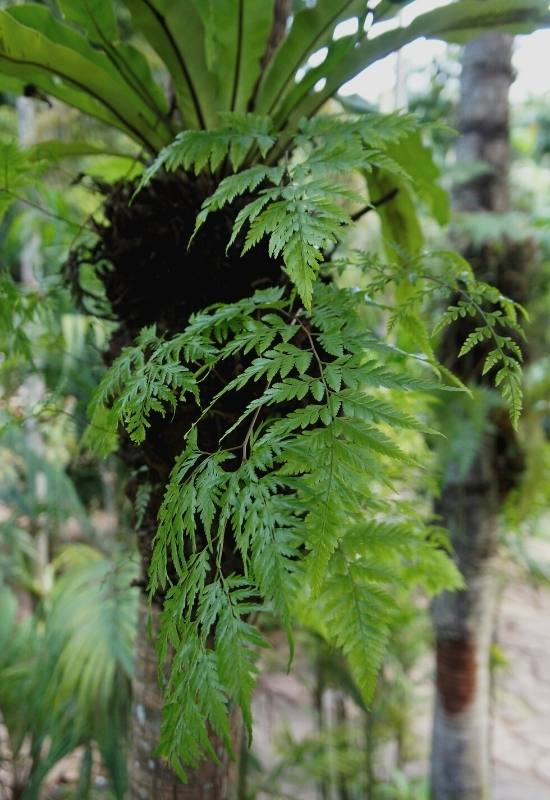
If you want your low light room or even garden to have super fine texture and vibrant green draping from hanging baskets, then hens and chickens fern is worth a try.
Its fronds arch beautifully with their intricate and soft looking leaflets, that look like a soft carpet of fine and tender needles.
At the tips, they also produce little bulbs which they use to grow new plants when, in the open, they touch the soil.
Evergreen and fresh looking all year round, this draping beauty from Australia and New Zealand can grow into a considerable houseplant, and because it is low maintenance and sturdy, it is perfect for a large solution in a shady place.
A very healthy plant with vigor and a soothing look, hens and chickens fern softens rooms as well as gardens thanks to its lace like foliage, for a moment of peace after work.
9: Chinese Evergreen Plant (Aglaonema commutatum)
If you fancy a broad leafed, sumptuous and exotic houseplant for a hanging basket where you don’t get much sunlight, have a look at Chinese evergreen plant.
Lovely clumps of elliptical, long and pointed leaves will reflect the little light with their glossy surfaces, and these also have a lovely variegation; pale gray green in the middle and mid green towards the margin, often striped, but there are variations with silver and even red!
Soft and fresh looking, this herbaceous perennial from Asia and New Guinea will keep your room looking florid and bright all year round. But careful, it is toxic to pets! It can also bloom, with lovely, white, calla like spathes and spadices.
In a hanging basket, however, it will be out of reach of them, so, this is the perfect solution to keep this lovely exotic houseplant in a shady corner where you need it most.
10: English Ivy (Hedera helix)
Why not bring some fresh looking underbrush into your dark room with English ivy hanging from a basket?
Its glossy, three or five lobed leaves will hang in profusion from the vines that drop from your container, making you and your guest feel a bit of that oxygen rich air you breathe in a forest.
And there are also many variegated varieties, including the green and cream yellow ‘Goldchild’, which has won the Award of Garden Merit by the Royal Horticultural Society, or the white and dark gray green ‘Glacier’.
Or, if you want a more dramatic effect, have a look at ‘Needlepoint’, with dark and thinned, pointed leaves.
English ivy is perfect for both indoors and outdoors, with his cascade of invigorating leaves, shiny effects and, let’s not forget, very low maintenance.
11: Arrowhead Vine (Syngonium podophyllum)
No houseplant is better than arrowhead vine to bring drama to a shady corner in a living room or office… As its name suggests, the large leaves of this evergreen from the lush forests Central and South America have the shaped of the points of arrows, but unlike them… they are quite big, about 6 inches long (15 cm), and glossy and in many varieties, variegated with two different shades of green, or with yellow and even white patches as well.
But for a different touch, pink is also possible! These form very dense and luxurious clumps that will drape your containers and once a year, blooms with cream spadices and white with some pale pink spathes may also pop their heads up.
Just allow your arrowhead vine to grow up a bit, and then it will arch down from your hanging basket to reveal all the beauty of its foliage from the top of cupboards or shelves.
12: Watermelon Peperomia (Peperomia argyreia)
For a low hanging basket in a shady spot but lots of personality, you could grow watermelon peperomia. This small South American evergreen has leaves in the shape of a guitar pick, and the stripes of very pale, almost white and deep dark green make them look like the fresh and juicy fruits it takes its name from.
The foliage is also glossy and dense, forming round and thick clumps of decorative patterns. In fact, this is a tiny beauty with a lot of sculptural value, and it is also easy to grow.
Very regular in shape and colors, with a welcoming appearance, it is also a much loved houseplant by children. And spikes of red flowers will appear and rise above it in spring and summer.
Use a smooth, glossy container to bring out the marble effect of watermelon peperomia and enhance the texture and patterns of its foliage to brighten up poorly lit rooms.
Bring Light To Dark Corners With Shade Loving Hanging Plants
Your choice for shady and poorly lit corners is far smaller than for bright spots. However, you must admit that there are quite a few beauties that will bring their personality, vitality, even sculptural qualities to beautiful hanging baskets even in that dark corridors where you need, in fact, some vibrancy, color and life!

Written By
Amber Noyes
Amber Noyes was born and raised in a suburban California town, San Mateo. She holds a master’s degree in horticulture from the University of California as well as a BS in Biology from the University of San Francisco. With experience working on an organic farm, water conservation research, farmers’ markets, and plant nursery, she understands what makes plants thrive and how we can better understand the connection between microclimate and plant health. When she’s not on the land, Amber loves informing people of new ideas/things related to gardening, especially organic gardening, houseplants, and growing plants in a small space.

